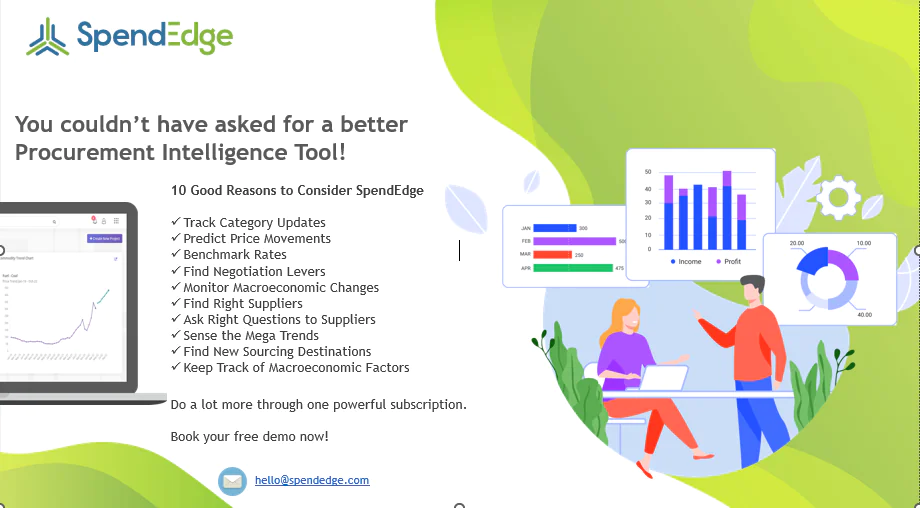Procurement, as a pivotal aspect of business operations, necessitates a robust framework to ensure the acquisition of goods and services aligns with organizational objectives while maintaining ethical standards and compliance with regulations. Central to this framework is the development of a comprehensive procurement policy. Such a policy not only serves as a guiding document but also as a means to instill transparency, accountability, and efficiency within the procurement process.
Procurement in Financial Services: An Overview
Procurement in financial services encompasses the strategic acquisition of goods and services necessary for the smooth operation of financial institutions. From technology solutions and office supplies to consulting services and regulatory compliance tools, financial service providers rely on efficient procurement processes to support their core functions. Given the highly regulated nature of the financial sector, procurement in this industry requires stringent adherence to compliance standards and risk management protocols, ensuring that all vendors and suppliers meet regulatory requirements and security standards.
Furthermore, procurement in financial services is increasingly focused on digital transformation initiatives aimed at enhancing operational efficiency, customer experience, and cybersecurity. With the growing importance of fintech innovations, financial institutions are leveraging procurement strategies to acquire cutting-edge technologies such as artificial intelligence, blockchain, and cloud computing to stay competitive in the rapidly evolving landscape. Additionally, strategic partnerships and vendor management play a critical role in procurement within the financial services sector, as institutions seek to build resilient supply chains and forge collaborative relationships with trusted suppliers to support their long-term objectives.
Our market intelligence solutions can help you with procurement
Foundations of a Protective Policy
At its core, a procurement policy should reflect the values and objectives of the organization while adhering to legal and regulatory requirements. It lays the groundwork for transparent, accountable, and ethical procurement practices. Key elements to be addressed include:

Objectives and Scope
Defining the objectives and scope of the policy is crucial to provide clarity and direction. For instance, a manufacturing company may specify in its procurement policy that the primary objective is to source high-quality raw materials at competitive prices to maintain product standards while optimizing costs. Additionally, the scope could encompass all procurement activities, including sourcing, purchasing, and contract management, across various departments or business units.
Roles and Responsibilities
Clearly delineating roles and responsibilities within the procurement process is essential for accountability and efficiency. In a large corporation, this may involve specifying the responsibilities of procurement managers, purchasing officers, and finance personnel. For example, the procurement policy might outline that procurement managers are responsible for vendor selection and negotiation, while purchasing officers are tasked with processing purchase orders and ensuring timely delivery of goods. By defining authority levels and decision-making processes, the policy streamlines operations and reduces the risk of miscommunication or delays.
Compliance and Ethics
Emphasizing compliance with laws, regulations, and ethical standards is paramount to maintain the organization’s reputation and mitigate legal risks. For instance, a healthcare institution’s procurement policy would underscore the importance of adhering to industry-specific regulations, such as HIPAA (Health Insurance Portability and Accountability Act), to safeguard patient privacy and confidentiality. Furthermore, the policy may include provisions for conducting due diligence on vendors to ensure they adhere to ethical business practices, such as labor standards and environmental regulations.
Risk Management
Identifying and mitigating risks associated with procurement activities is essential to protect the organization from potential harm. Consider a scenario where a construction company’s procurement policy addresses the risk of project delays due to supply chain disruptions. To mitigate this risk, the policy may stipulate the use of multiple suppliers for critical materials, maintaining buffer stocks, or implementing contingency plans in case of emergencies. Moreover, the policy could outline procedures for assessing the financial stability and reliability of vendors to minimize the risk of default or non-performance.
Structuring the Policy
Clarity and Simplicity
The language used in the procurement policy should be clear, concise, and devoid of unnecessary jargon or complexity. Consider the example of a technology company drafting its procurement policy. Instead of using technical terms unfamiliar to non-specialists, such as “RFQ” (Request for Quotation), the policy could simply state “price quote request.” This clarity ensures that all stakeholders, regardless of their level of expertise in procurement, can easily understand and adhere to the policy.
Hierarchy and Organization
Organizing the policy in a logical hierarchy facilitates comprehension and reference for users. For instance, a construction company’s procurement policy may have distinct sections addressing different phases of the procurement process, such as “Pre-Procurement,” “Procurement Execution,” and “Post-Procurement.” Within each section, subsections can further delineate specific procedures and requirements, such as “Vendor Qualification” or “Bid Evaluation Criteria.” This hierarchical structure enables users to navigate the policy efficiently and locate relevant information with ease.
Documentation and Communication
Documenting the procurement policy in a centralized repository and disseminating it effectively are crucial for ensuring that all stakeholders are aware of and adhere to the policy. For example, a multinational corporation may utilize a cloud-based document management system to store the procurement policy, accessible to employees across different geographical locations. Additionally, conducting regular training sessions and workshops on the procurement policy ensures that employees understand their roles and responsibilities. Furthermore, providing manuals or handbooks summarizing key policies and procedures allows for quick reference when needed. Leveraging electronic platforms, such as intranet portals or collaboration tools, enhances accessibility and facilitates communication regarding updates or revisions to the policy.
Get yourself a free trial of our services now
Key Components of a Protective Policy
A comprehensive procurement policy should encompass various aspects to safeguard the interests of the organization and promote efficiency in procurement processes. Essential components include:
Procurement Planning: Outline procedures for needs assessment, budgeting, and strategic planning to ensure alignment between procurement activities and organizational objectives.
Vendor Management: Establish criteria for vendor selection, evaluation, and performance monitoring, emphasizing transparency, fairness, and competitiveness in procurement transactions.
Contracting and Negotiation: Define protocols for contract development, review, and negotiation, emphasizing clarity, enforceability, and compliance with legal requirements.
Financial Controls: Implement measures to safeguard financial resources, such as budgetary controls, expenditure authorization limits, and reconciliation procedures.
Conflicts of Interest: Address conflicts of interest that may arise in procurement activities, requiring disclosure and recusal where necessary to preserve impartiality and integrity.
Continuous Improvement and Evaluation
The development of a procurement policy is not a one-time endeavor but an ongoing process that requires periodic review and refinement. Foster a culture of continuous improvement by:
Performance Monitoring: Establish metrics and benchmarks to assess the effectiveness and efficiency of procurement processes, identifying areas for improvement and corrective action.
Feedback Mechanisms: Solicit feedback from stakeholders, including procurement personnel, vendors, and end-users, to identify pain points, challenges, and opportunities for enhancement.
Regulatory Updates: Stay abreast of changes in laws, regulations, and industry best practices related to procurement, updating the policy accordingly to ensure compliance and relevance.
A protective procurement policy is indispensable for safeguarding the interests of the organization, promoting transparency, accountability, and integrity in procurement practices. By adhering to the principles and guidelines outlined in this guide, organizations can empower their procurement function to operate effectively and ethically, driving value and mitigating risks in the acquisition of goods and services.
Get in touch with our experts for more information
Conclusion
In conclusion, the development and implementation of a comprehensive procurement policy serve as a cornerstone for ensuring transparency, accountability, and efficiency within organizations, particularly in the dynamic landscape of financial services. By delineating clear objectives, roles, and responsibilities, addressing compliance and ethical considerations, and incorporating robust risk management practices, organizations can safeguard their interests while promoting fair and competitive procurement practices. Additionally, structuring the policy with clarity, simplicity, and accessibility, coupled with continuous evaluation and improvement, fosters a culture of integrity and excellence in procurement operations. Ultimately, a protective procurement policy not only enhances operational resilience but also reinforces trust and confidence among stakeholders, driving sustainable growth and success in the ever-evolving financial services sector.





